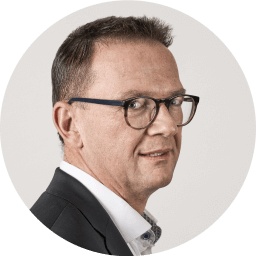For more than 40 years, Steinbeis Papier GmbH has been walking the talk when it comes to sustainability. Their products are made from 100% recovered paper in one of Europe’s most modern paper mills, which has enabled them to achieve excellence in Scope 1 and 2 carbon reduction. Recently, they decided to take the next step toward net-zero by identifying hidden emissions in their supply chain.
The challenge
Efficiently measuring emissions across the entire value chain.
The data needed for calculations was scattered across different systems and required lots of back-and-forth communication. With such large operations, they knew the challenge of measuring and reducing supply chain emissions would not be easy. With the traditional approach, baseline emissions measurement could take up to years to complete with the accuracy needed for reduction. And by the time it is completed, it would be outdated as it does not account for changes in their operations and suppliers.
Their primary goal was to have transparency of the carbon footprint of their product line.
1. Address their entire carbon footprint strategy
2. Gain full visibility into Scope 1, 2 and 3
3. Quickly update their data to reflect changes throughout the supply chain
4. Identify areas with major impact on carbon emissions
Integrated solution that bridges the gap between Product Carbon Footprint (PCF) and Supply Chain Emissions
Using carbmee’s Environmental Intelligence System™ (EIS) and already available data in their ERP system, Steinbeis calculated the emissions associated with nearly 30,000 transactions from 200 suppliers within just weeks' time. With this initial transparency, the Steinbeis team will be able to determine the carbon footprint of their entire product line including emissions generated throughout their value chain with maximum time efficiency. This enables them to identify where emissions are highest and prioritize reduction initiatives that have greatest impact and are most cost-effective for the company.
Why EIS?
- Gain full emissions transparency across Scope 1, 2, and 3 in days, not months.
- Optimize operations and supply chain through automated and dynamic PCF calculations
- Make better data-driven decisions with granular and accurate data.
- Unlock reduction opportunities hidden in the supply chain.
“At Steinbeis Papier, we want to manage our environmental impact with the same level of precision as we manage our business. The EIS™ will help us gain complete transparency into the carbon emissions of our products and everything that goes into them, at the highest level of granularity. From the massive amounts of secondary fibers down to the last drop of retention aid.”
Key Learnings from Steinbeis for other companies
1. Efficient carbon management can only be achieved with automated solutions. Traditional methods are costly and not optimized for frequent updates, resulting in a short life cycle.
2. Sustainability, R&D and Procurement must work together to reduce carbon emissions. And having a software that brings everyone together is critical to achieving great results.
3. High-quality data is key to identifying effective reduction strategies. Without it, companies may focus time and effort on low impact initiatives instead of those with a high return-on-investment.
4. Companies that do not start now will be playing catch-up in the next years to come. The market is changing, and the companies that make the green transformation now, will have a massive competitive advantage.
“We used to calculate Scope 3 with external partners, which was costly and not optimized to reflect changes in our procurement decisions. With the EIS™, we will have full visibility of our Scope 1, 2 and 3 emissions in one place and can easily adjust the calculations as changes occur in the value chain, allowing us to make confident decisions about carbon reduction in the future.”



